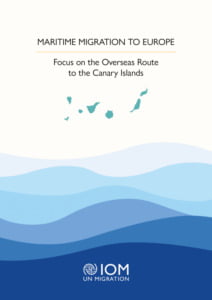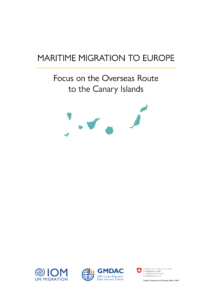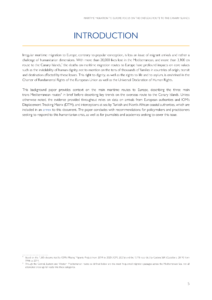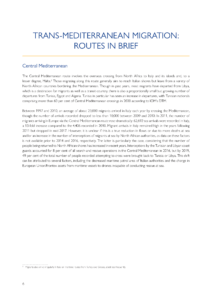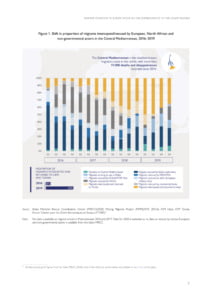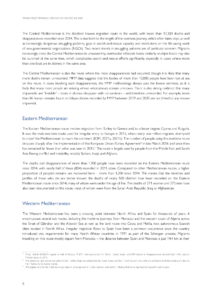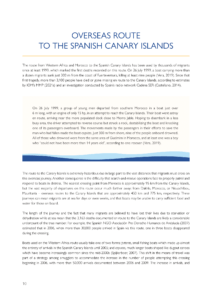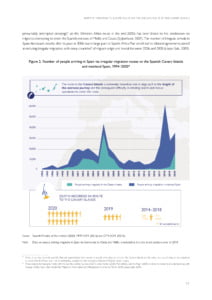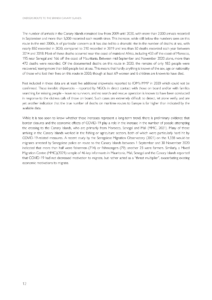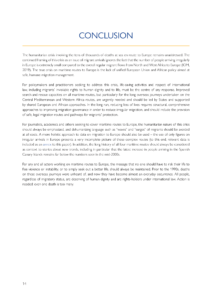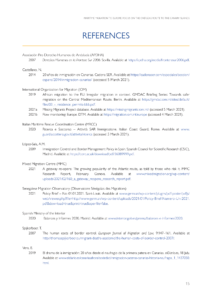Migratory flows, headed for the Canary Islands, continue to worry the Canary Islands Government, in particular the increases in two vulnerable groups: minors, whether accompanied or not, and women, particularly pregnant women. In fact, data from the last two weeks reinforce this upward trend with 75 [supposed] minors (pending medical confirmation) and 94 women having arrived on the islands in recent days and weeks. The changing profile of migrant arrivals, with respect to the 2006 crisis, a record year in which nearly 32,000 individuals arrived on Canary Islands shores, UNHCR (the UN Refugee Agency) attributes to several factors, including the intensification of conflicts in various countries of origin and the effects of the global pandemic, among other causal influences.
“The Canary Islands cannot live in a constant crisis”, declared Canary Islands Minister for Social Rights, Noemí Santana, yesterday at a press conference following a meeting of the Canarian Immigration Forum , where social agents and host NGOs, involved in the reception and care of migrant arrivals, shared information and perspectives with the general director for Inclusion, Maite Pacheco, the Spanish President of the Commission for Civil Liberties of the European Parliament (LIBE), Juan Fernando López Aguilar, and the UNHCR’s international spokesperson, Sophie Muller, among others. The results from that meeting were translated into an update of the Canary Island Immigration Plan and a declaration which they intend to submit to the Canary Islands Governing Council for their adoption and transfer to other institutions. The intention now is to make the archipelago a benchmark in migration management, not only responding to the current situation, but also generating resources for the future. According to Santana, Canarian society will be directly involved – through NGOs, trade unions, employers and third sector agents – and both the central Executive, in Madrid, and the European Union will be asked to be jointly responsible for management of the phenomenon.
Likewise, the Canary Islands have pointed out the need for a law that requires a “responsible” distribution of unaccompanied migrant minors among all the autonomous communities, with the aim that the burden of guardianship does not fall solely on recipient territories. “The Canary Islands are willing to assume their share but we cannot leave the problem in the hands of the will of autonomous communities, we must legislate”. At the moment, agreements have been reached to transfer 200 minors to different regions of the Spanish mainland, that is to say less than 10% of those currently hosted here on the islands, but only 32 minors have so far been transferred: 10 to Castilla y León, 14 to Extramdura and 8 to Navarra.
“The Canary Islands cannot live a constant humanitarian crisis, we must act”
NAOMI SANTANA
“Dignified care for migrants involves working together, we cannot do it alone,” said the Minister. “Given the complex migratory reality, specific and credible funds are required.” Santana pointed out the work the Canary Islands Regional Government has already been doing, to care for minors, with the opening of 29 emergency centres to accommodate the growing number that has now reached nearly 2,700 being sheltered. Following the previous crisis, the number of places available had been reduced, to just 600, and many centres were dismantled “as if the Canary Islands had changed their geographical location.”
Controversially, three of the new temporary centres were located in empty hotels, on the south of Gran Canaria, due to the total lack of alternative spaces, and only possible due to the total collapse of tourist arrivals because of covid restrictions on travel. One of these has already been closed and the other two are expected to close in the coming months, ahead of any attempts to restart tourism.
Several residents, as many as 50, in the usually popular tourist resort town of Puerto Rico de Gran Canaria, living in tiny apartments originally constructed as short-stay tourism complexes, and subsequently sold to, primarily foreign, residential buyers, have complained for weeks about migrants having been temporarily accommodated in, otherwise out-of-use, 2-star and 3-star hotels.
Though almost all adult migrants have now been transferred to Foreigner Internment Camps, the issue of protecting under-eighteen-year-olds has been more complex to resolve. Few people are more upset, or vocal, than the unfortunate residents living near to hastily organised emergency accommodations set up to house unaccompanied minors, which they say are plainly not fit for purpose. Much of their upset follows at least three very noisy incidents, caused by frustrated youths cooped up in apartments and, in at least two particular situations where adult migrants, pretending to be under 18, have instigated serious disturbances, including violence, that required police intervention in full protective riot gear. Arrests were made and the perpetrators jailed.
Many that have spoken to The Canary News feel abandoned in a situation outside of their control, with little communication, or understanding, between the authorities and local residents, who claim their previously dead-quiet hillside streets, overlooking the town, have, in the last two months, turned into daily gathering points for large numbers of disaffected and otherwise unoccupied migrant youths, under the guardianship of NGOs specialising in child protection and youth social services on behalf of the regional government.
The Full Editor’s Comments are available to Supporters of GranCanaria.NEWS
With regards to the presence of minors, in adult detention centres and vice versa, Noemí Santana indicated that an attempt is being made to respond with improvements to the initial filiation of immigrants upon arrival at the coasts, through the presence of social entities specialised in dealing with minors at the port, since the Government depends on the results of bone tests to confirm whether an individual is a minor and to carry out their functions as legally responsible guardians for those under the age of 18.
The forum also drew urgent attention to the need to act in the face of “not less than a thousand migrant deaths” at sea over the last year, primarily on the Ruta Canaria, according to UNHCR estimates, a number they consider “minimal” due to the lack of data. Additionally, participants explored the possibility of adapting available resources or opening centres segregated by gender, to prevent women from having to stay in the same centres as men, where there are currently just a small number of places reserved for them, and thus to be able to improve attention offered to them as a vulnerable group.
Today we send a very clear message: the Canary Islands cannot live in a permanent humanitarian crisis.
Today we have reconvened the Canarian Immigration Forum, for the second time, and with the presence of all the relevant institutions and the third sector.
— Noemí Santana Perera (@noepmp) March 29, 2021
Today we send a very clear message: the Canary Islands cannot live in a permanent humanitarian crisis.
Today we have reconvened the Canarian Immigration Forum, for the second time, and with the presence of all the institutions and the third sector.
36 [assumed] minorsYoung migrants that have reached the Canary Islands in the last week, following the predicted increase in boats arriving, to which are added another 39 the previous week. A trend that no longer only encompasses unaccompanied minors, but now also those who embark with family members.
200 placesThis is the current expected number of minors who will be transferred to other regional communities in Spain, although at the moment only Castilla y León (10), Extremadura (14) and Navarra (8) have actually transported young people from the islands to be cared for elsewhere.
69 womenThis is how many were travelling in the boats that have arrived to the Canary Islands over the last seven days, two of them died when a boat overturned on Friday, and at least two are pregnant. This is 43 more than the previous week, bringing the total to 94 in just 15 days, and they already represent 12% of the migrants who arrived this year.
29 emergency centresThe Canary Islands Government has opened temporary reception facilities to welcome the growing number of arriving minors, now under guardianship, a figure that has already reached around 2,700 in care. During the biggest migrant wave, back in 2006 known as the Crisis of the Cayucos, the Canary Islands barely had 600 places in operation, and even with other communities sharing the burden, the capacity on the islands is wholly insufficient.
600 people deadThese were the confirmed deaths counted on the Canary Route in 2020, according to the International Organisation for Migration (IOM), although UNHCR state that figure to be more than a thousand, at a minimum estimate, with many more thought to have perished without anyone knowing, due to the lack of data around those who embark on this perilous journey.
Here is a recent report from the IOM:



